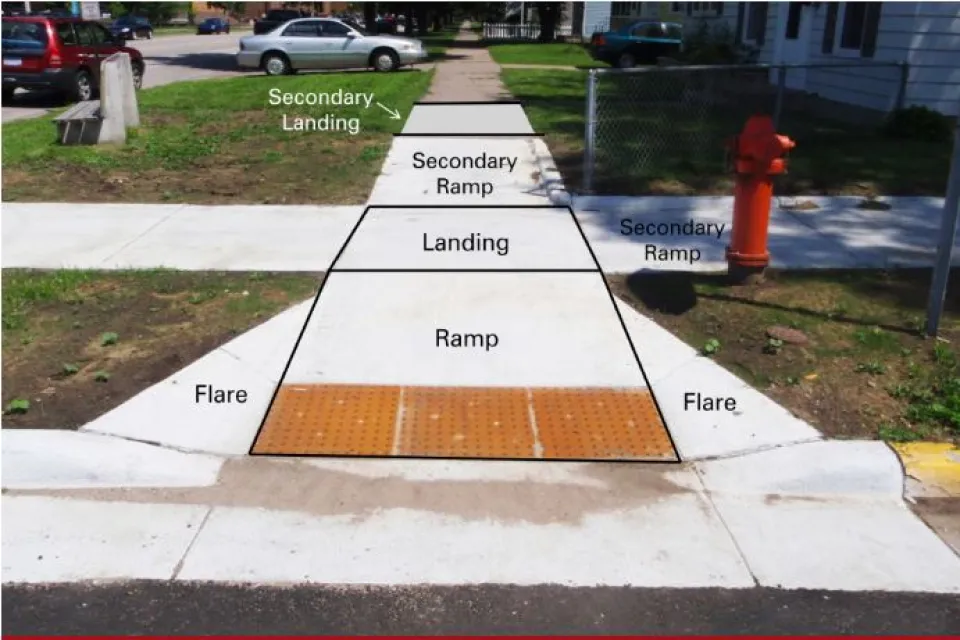Americans with Disabilities Act (ADA) transition plan
The Americans with Disabilities Act (ADA), enacted on July 26, 1990, is a civil rights law prohibiting discrimination against individuals on the basis of disability.
As a provider of public transportation services and programs, the Olmsted County Public Works Department must comply with this Act and has developed a transition plan detailing how the county will ensure that all transportation facilities are accessible to all individuals.
Olmsted County must meet these general requirements for individuals with disabilities:
- Access to all public programs and places
- Modification of policies that deny equal access
- Effective communication procedures
- An ADA Coordinator that coordinates ADA compliance
- Public notice of ADA requirements
- Grievance procedure for resolution of complaints
The Public Works Department’s goal is to provide ADA-accessible pedestrian design features as part of the County’s long term transportation capital improvement projects (CIP). These standards and procedures will be kept up to date with nationwide and local best management practices for design of pedestrian facilities within public right-of-way.
The transition plan will assist with the prioritization of ADA accessibility improvements which will be made over a period of time as resources are available.
ADA Coordinator
Olmsted County has identified an ADA Title II Coordinator to oversee County Public Works Department policies and procedures:
Benjamin Johnson
Director of Olmsted County Public Works, County Engineer
2122 Campus Drive SE, Ste 200 Rochester, MN 55904
Phone: 507-328-7054
Email: benjamin.johnson@olmstedcounty.gov
Curb Ramp Elements

Without these basic ramp elements, sidewalk travel can be dangerous, difficult, and in some cases impossible for people who use wheelchairs, scooters, and other mobility aids.
Curb ramps allow people with mobility impairments to gain access to the sidewalks and to pass through center islands in streets. Without accessible ramps, these individuals are forced to travel in streets and roadways, are put in danger, and/or are prevented from reaching their destination.
